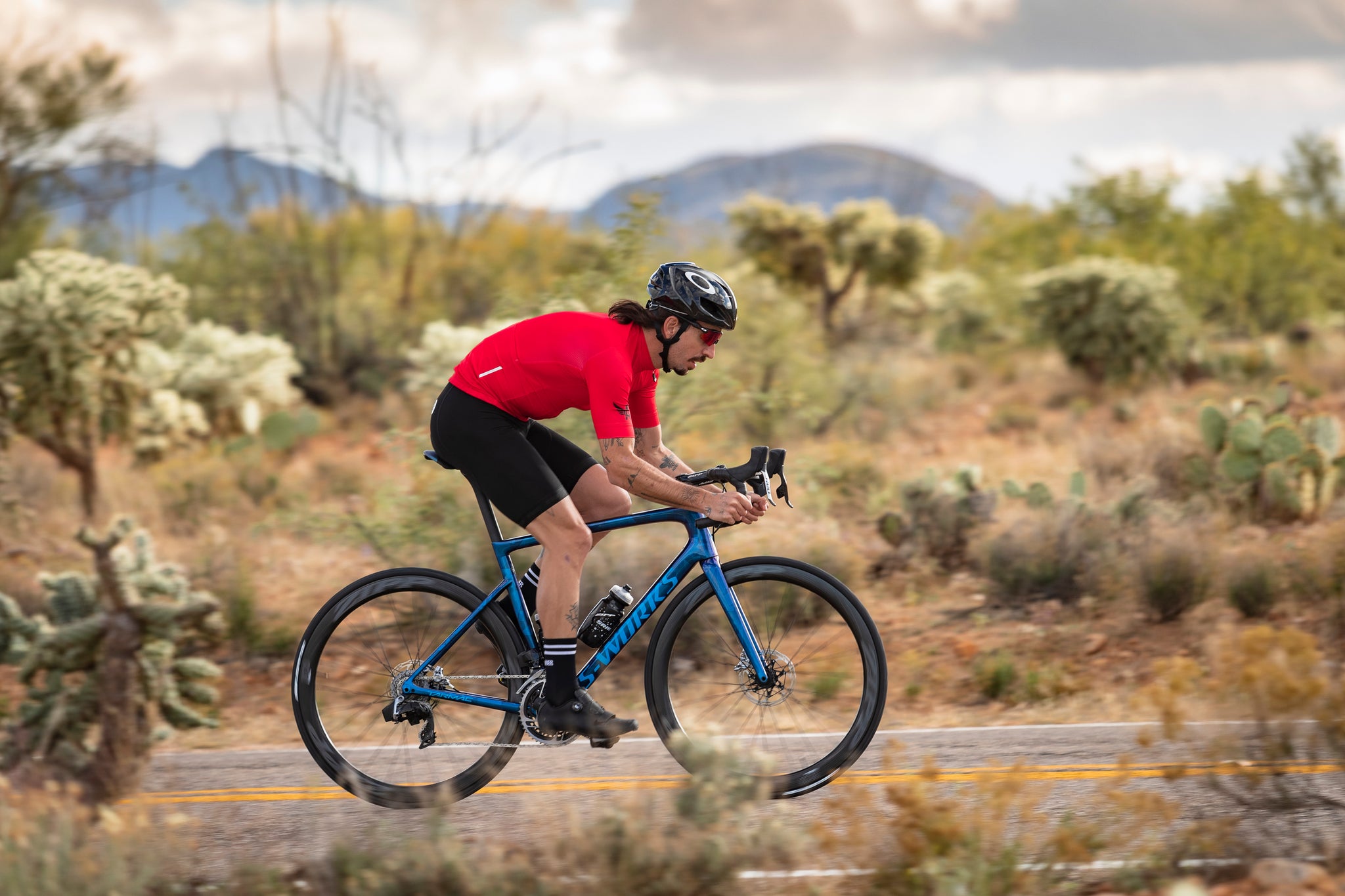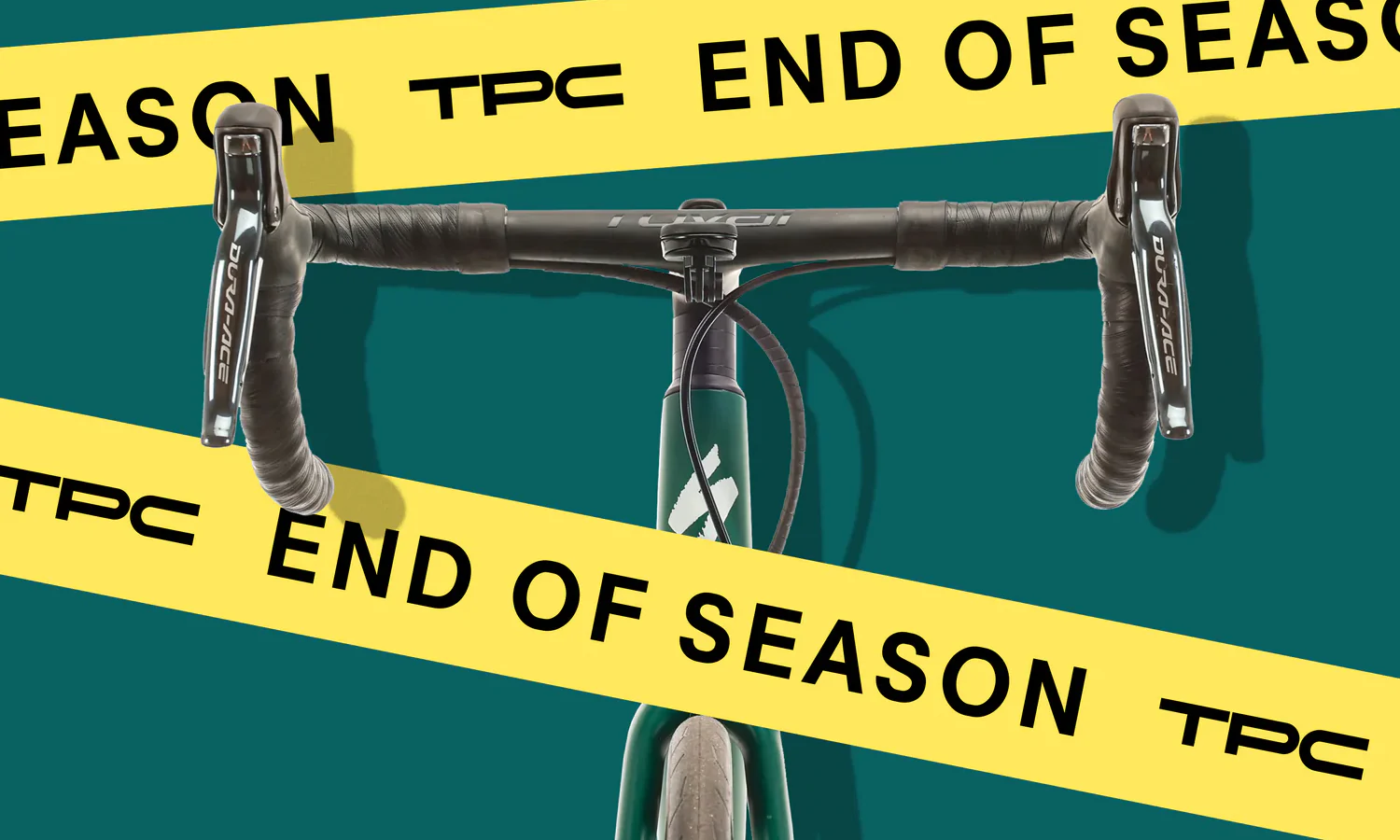You are an engine, and without you, your bike is powerless. Like the engine in a car or motorcycle, the amount of power you produce can be measured. The tool that quantifies your work is the power meter.
A power meter allows riders who are serious about performance and training to monitor their workload, track progress, and pace efforts during important events or races.
If you’re curious about diving into the world of cycling with power, this guide will explain the ins and outs of how power meters work, the pros and cons of different power meter options, and how to use your power meter to extract the most benefit.
[button]SHOP ALL POWER METERS[/button]
Contents
- Why use a power meter
- How a power meter works
- Types of power meters
- Accuracy and calibration
- ANT+ vs. Bluetooth
- Final Thoughts
How to measure cycling power — and why
Power meters measure how much work a cyclist is doing on the bike and express it in watts. The ability to measure an athlete’s power is something unique to cycling. Other endurance sports like running and swimming are limited to using heart rate, RPE (rating of perceived exertion), and time to measure work. You may already be familiar with heart rate monitoring. Perceived exertion on a scale of 1-10 is easy for anyone to understand, and anyone who's run a mile can grasp the concept of pacing for a mile or another fixed distance. But those are imperfect tools.
“Heart rate can be affected by a lot of factors — caffeine, sleep, and stress,” says Nate Keck, product manager at Quarq. “It’s also an indirect measurement of what is actually happening. Heart rate has lag while power is instantaneous. If you go into a sprint at a power of 1,000 watts, you see that number instantly. But your heart rate may take 30 seconds, a minute, or even more to respond.
“RPE can measure effort, but when talking about someone’s perceived effort on a scale of 1-10, my 10 is probably different than your 10. People have different pain thresholds. With perception, there’s always some inherent error.”
 Riding a bike equipped with a Quarq power meter | Photographer: Chris Milliman
Riding a bike equipped with a Quarq power meter | Photographer: Chris Milliman
Heart rate and RPE can be useful for cyclists, but power is the ultimate training tool. It provides the most accurate and complete picture of how much work the rider is doing during a ride, race, or workout. Environmental factors like wind and hills, and ride metrics like speed that may skew your perception, but won’t skew your power numbers. The only thing that matters is the actual effort.
The vast majority of training plans and advice you will find online will use power as the foundation for structured workouts. Measuring your power gives you accurate and consistent targets to hit during a ride so you can train effectively. This allows you to improve specific aspects of your fitness and reliably get results.
It’s always possible to train without a power meter. Many riders still do. But anyone seeking serious improvement in their performance will benefit from using a power meter for structured training and data-driven riding.
[newsletter]
How a power meter measures watts on a bike
Power equals force times distance over time:
Power = Force x Distance / Time
For a power meter to work on a bike, it has to measure the amount of force a rider is generating, and how fast that force moves (speed = distance / time). When pedaling a bike, the force comes from the torque produced by a rider’s legs pushing down on the pedals. Speed comes in the form of RPM (revolutions per minute).
To measure force, power meters have strain gauges that use an electrical impulse to measure deflection inside the power meter. Deflection changes the resistance in the gauge and this resistance can then be translated into torque. Then accelerometers in the power meter derive RPM. RPM is usually measured at the cranks (a.k.a. cadence) but it can also be measured at the wheel. Multiply torque by RPM and you have power. A power meter then sends that power number to be displayed on your head unit or other display.
Types of power meters
There are myriad power meter options on the market. The main differentiator most riders will notice is cost, ease of installation, and where the power meter is located on the bike. In practical terms, there are really only five locations on the bike to measure power:
- Crank Spider
- Crank Arm
- Pedal
- Rear Hub
- Crank Spindle
Check out our power meter buying guide to learn more about the differences, advantages and disadvantages, pricing, and popular brands and models in each category
[button]SHOP ALL POWER METERS[/button]
Accuracy and calibration: Keys to measuring cycling power
Power meter manufacturers make a big deal about accuracy. They generally express the accuracy of their products as within +/- X%. Accuracy is good because it means the power number you end up seeing is representative of the truth.
If you don’t have accurate power meters, then it becomes harder to objectively compare your power numbers against the numbers of other riders (the importance of this may vary depending on your goals or ego). If you ride multiple bikes with different power meters, especially if they’re from different manufacturers, your power numbers will likely be off between bikes. These are important considerations, but ultimately, the thing that is most important when using a power meter is consistency.
As long as a power meter’s readings are consistent from ride to ride, it will be useful for measuring your performance and tracking your progress. For performance-oriented riders, the most important person they need to compete with is themself.
“The holy grail of power meters is one that is accurate and consistent,” says Keck. “But really as long as what you’re using is consistent from day to day, then that’s what’s most important.”
To provide consistent information, power meters require regular calibration. For the end-user, “calibrating” technically refers to zeroing the power meter. Zeroing, or setting the "zero offset," is the equivalent of hitting the tare button on a scale. It gives your power meter an accurate starting point for measurement. All power meters have some form of zeroing or calibration associated with them. This is usually done by positioning your power meter in a neutral position and sending a calibration command with your head unit. Some power meters can also receive a calibration command through a smartphone app.
Most manufacturers recommend riders calibrate their power meters anywhere from once a week to before every ride.
“The holy grail of power meters is one that is accurate and consistent.” — Nate Keck
“I suggest doing it before the start of every ride,” says Keck. “It’s important, especially before something like an FTP (functional threshold power) test, an important interval workout, or a race. Recalibrating often ensures your power meter is at its most accurate.”
It’s typically best to calibrate your power meter in the environment you’re going to ride in. If it’s extremely hot or cold outside, calibrate outside rather than indoors where the temperature is controlled. Manufacturers do build their power meters to compensate for temperature shifts. Quarq, for example, builds in what it calls “10K Temperature Compensation.”
“We run a power meter through a heat cycle and program 10,000 data points that help it know what impact temperature fluctuations have on the torque in the strain gauges,” Keck says. “That being said it’s nice to calibrate in specific conditions to remove as many variables as possible.”
Some manufacturers are also starting to introduce automatic calibration into their high-end power meters. These power meters calibrate themselves whenever they sense the rider is coasting and there is no strain to ensure accuracy throughout a ride.
“Quarq uses what is called ‘Magic Zero,’” Keck explains. “When you’re coasting it’ll take data and set a new zero offset. The power meter is constantly checking itself and you don’t have to manually do it anymore. It’s now available as part of our current firmware.”
[button]SHOP ALL POWER METERS[/button]
ANT+ vs. Bluetooth
Power is useless unless a rider can see their power data. Most riders will view their power on a head unit (Garmin or a Wahoo are popular options) mounted to the bike. Older power meters required a wire to transmit data to a head unit but all new power meters transmit data wirelessly.
For wireless transmission, ANT+ has long been the standard, but Bluetooth Smart (or BLE/BTLE) has sprung up as an additional transmission option on most new products. Riders new to using power may wonder if they should select one transmission protocol over another.
“Historically ANT+ has been a bit more stable and trusted,” Keck says. “But Bluetooth has really improved over the last few years. Most new head units now have the ability to do both. They’re both fairly reliable now.”
Most power meter manufacturers still recommend using ANT+ simply to reduce compatibility issues. Some devices still don’t support Bluetooth Smart and some may have issues displaying power properly. If you’re curious, experiment switching between them on your own devices and see if you notice a difference. Personally, I only use Bluetooth for connecting to my smartphone or laptop for indoor training sessions.
Final thoughts
 Training with power | Photographer: Jordan Clark Haggard
Training with power | Photographer: Jordan Clark Haggard
Power meters are not cheap. But if you are committed to improving your riding performance, they are a great investment. Personally, I’ve gone back and forth between riding with and without power meters. I’m a data-driven rider who likes to see numbers. They satisfy some part of the obsessive nerd that resides deep inside me.
Power meters are an important tool for my training leading up to big target events. I recently bought an Easton spindle-based power meter for my new bike so I could prepare for Unbound Gravel, the biggest race of my year. It’s allowed me to stay on target with my workouts. Seeing my power numbers improve has been key to maintaining my motivation. Also, during the race, I'll watch my power to pace my effort so that I can finish strong.
I have used several crank arm-based power meters from Stages and Pioneer in the past and had great reliability and results. If I get the opportunity to build my future dream bike, it will likely have a Quarq because it is an integrated option in the new SRAM AXS drivetrains.
"Power meters are becoming less of an aftermarket upgrade," says Keck. "Bikes from major manufacturers are coming spec’d with them now because they've become an expected feature for serious riders. That’s why you see it a lot on a lot of Red and Force AXS drivetrains now."
For riders with the ambition and discipline to make huge improvements in their performance, a power meter is the only tool you’ll need. If you’re more interested in riding without rigid structured training, a power meter can be nice to have, but it won’t be quite as useful. Personally, I like having on even if I’m not training. It’s just fun.
Still, it is liberating at times to take a break from the numbers. When I ride without power, it allows me to disconnect from my brain a bit and reconnect with the experience of riding. Breaks like this help me remember why I love bikes so much. But I usually end up relapsing. The craving for power data always comes back.
[button]SHOP ALL POWER METERS[/button]
Do you use a power meter or shun it? What type of power meter do you prefer? Let us know in the comments!













